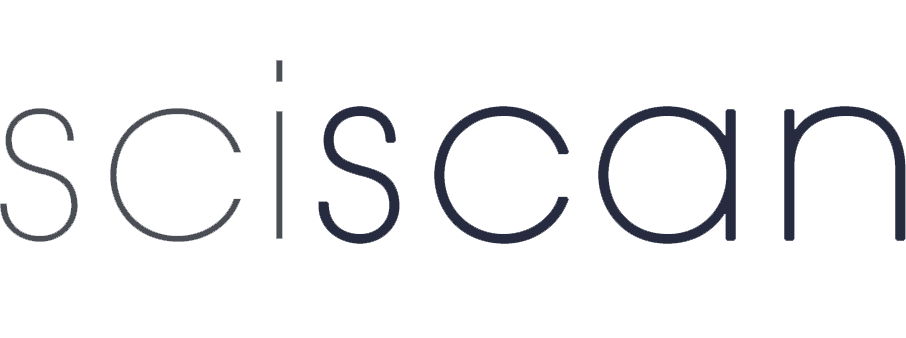Psychology of China
“知行不一”和“双重标准” ——儿童道德伪善的内涵及其作用机制
“Knowledge-behavior Gap” and “Double Standard” —The Connotation and Mechanism of Moral Hypocrisy in Children
- Authors: 王静¹ 贾延春² 刘壮壮³
-
Information:
1.曲阜师范大学教育学院,曲阜; 2.齐河县宣章屯镇学校,德州; 3.仲宫中心中学,济南
-
Keywords:
Knowledge-behavior gap; Double standard; Moral hypocrisy; Distributive fairness; Children知行不一; 双重标准; 道德伪善; 分配公正; 儿童
- Abstract: Young children endorse fairness norms related to sharing, but often act in contradiction to those norms when given a chance to share. Thus, young children appear to be moral hypocrites with regard to fairness. Moral hypocrisy refers to the failure to follow one’s own expressed moral rules and principles. Moral hypocrisy of children mainly involves two forms: “knowledge-behavior gap” and “double standard”. Knowledge-behavior gap is the intrapersonal discrepancy between what individuals think is normative and how they actually behave. Double standard focuses on the tendency among people to judge others more severely than they judge themselves. At present, the explanation of the mechanism of moral hypocrisy mainly emphasizes four viewpoints: The viewpoint of insufficient motivation hypothesis, the viewpoint of insufficient cognitive resources hypothesis, the viewpoint of social signal model, and the viewpoint of social learning theory. Future researchers can pay attention to how family and environment affect children’s moral hypocrisy, and provide theoretical support for the intervention and prevention of moral hypocrisy. 虽然儿童赞同与分享或分配相关的公正规范,但当有机会分配资源时,他们的行为往往与公正规范相矛盾。因此,就公正而言,幼儿似乎是道德“伪君子”。道德伪善是指个体没有遵循自己表达的道德规则和原则,主要包括“知行不一”和“双重标准”两种表现形式。知行不一是指个体认为的规范和他们的实际行为不一致,双重标准则是指个体对他人的评判比对自己的评判更为严厉的倾向。目前,对儿童道德伪善作用机制的解释主要涉及四个观点:动机不足假设的观点、认知资源不足假设的观点、社会信号模型的观点和社会学习理论的观点。未来研究者可以关注影响儿童道德伪善的家庭和环境因素,为道德伪善的干预和预防提供理论支撑。
- DOI: https://doi.org/10.35534/pc.0303036
- Cite: 王静,贾延春,刘壮壮.“知行不一”和“双重标准”——儿童道德伪善的内涵及其作用机制[J].中国心理学前沿, 2021,3(3):291-296.
1 引言
分配公正是一种以互利的方式分享社会互动收益的道德规范,是人类合作的标志,也是幼儿期重要的认知里程碑。虽然儿童赞同与分享或分配相关的公正规范,但当有机会分配资源时,他们的行为往往与公正规范相矛盾。研究发现,儿童报告说自己应该与他人平等地分配资源[1]。同时,当他人违背了平等分配规范时,儿童也能迅速发现这种不公正[2,3]。然而,当儿童有机会去践行这种公正规范时,他们却在自己和他人之间做出不公正分配,并分给自己更多的资源[4,5]。当儿童自身的利益受到威胁时,他们会违背公正规范并偏向自己。也就是说,虽然儿童在生命的最初几年重视平等分配,但有关公正的行为表现却是一个相对发展较晚的现象。因此,就公正而言,幼儿似乎是道德“伪君子”[6],即实际做出的利己行为与先前表述的公正规范并不一致。迄今为止,研究者已经发现了儿童早期对公正认知和行为之间的不一致,但较少研究关注其潜在的作用机制或认知过程。因此,本研究将对道德伪善的内涵及其作用机制展开具体的论述,为后续道德伪善的相关研究提供强有力的理论支撑。
2 道德伪善的内涵
道德伪善(Moral hypocrisy)指个体没有遵循自己表达的道德规则和原则[7]。道德伪善主要有两种表现形式,其一是个人层面的“知行不一(Knowledge-behavior gap)”,即个体认为的规范和他们的实际行为不一致;其二是人际层面的“双重标准(Double standard)”,即个体对他人的评判比对自己的评判更为严厉的倾向[8]。虽然不道德(Immorality)和道德伪善这两个术语有时可以互换使用,但两者在概念上还是有所差异。如果行为不道德的人承认自己的行为是不道德的,并且不期望其他人表现得更好,那他或她就不是伪君子,而是“真小人”。相比之下,道德伪善的“伪君子”是指那些公开坚持严格的道德规范,期望并要求他人遵守这些规范,但自己却在行为中私下违背这些道德规范的人[7]。道德伪善的个体有机会做出道德的行为,但因为道德行为代价高昂,促使他们选择屈从于他们的自身利益。解决道德自尊和自我利益之间紧张关系的一个方法则是实则在维护自我利益,但在表面上却宣称不是这样——从而展示了一种道德伪善的模式[9]。道德伪善可以帮助个体获得自私行为的物质回报,也可以获得让他人认为自己是正直和道德的社会和自我回报[10]。
有关分配公正的早期研究发现,当比较儿童对假设的资源分配场景和实际分配任务的反应时,两者之间存在判断—行为差距[11,12]。具体来说,对于假设的故事,儿童对公正的推理会经历几个层次的变化:从利己(以自我为中心或以主角为中心)的推理,到严格平等的信念,再到基于价值和需求的分配。相比之下,当儿童置身于类似假设故事的真实情境中时,他们倾向于偏爱自己,其行为不符合他们用来描述公正的原则。跨文化研究也发现,当询问儿童如何在两个接受者之间分配资源时,他们倾向于做出平均分配的判断[13,14]。然而,在真实的情境中,学前儿童却较少做出分享行为[15]。即使另一个接受者在场时,学前儿童也会分给自己更多的糖果或贴纸[4,16]。Batson及其同事发现,当要求参与者通过抛硬币来选择完成一项无聊的任务还是完成一项有趣的任务时,结果发现实际有大约80%的参与者报告自己是通过抛硬币给自己分配了有趣的任务——这一比例大大高于人们预期的50%。也就是说,人们声称他们会通过抛硬币来公正地分配任务,但他们却不会遵循抛硬币的结果,而是选择维护自己的利益。因此,抛硬币以示公平,但通过忽视抛硬币的结果并给自己分配积极的任务来维护自身利益,已经成为道德伪善的证据[10]。
3 道德伪善的作用机制
3.1 动机不足假设
动机不足假设(Insufficient motivation hypothesis)认为,幼儿缺乏平等分享自己资源的必要动机能力。以往研究倾向于利用该假说来解释幼儿在分享方面的失败。动机不足假设来源于儿童对公正并不陌生的事实。在学龄前阶段,儿童认为在他人之间分配资源时应当遵循平等规范[2]。在学龄前后期阶段,儿童倾向于在他人之间平等分配资源。在没有涉及儿童自身利益的情境下,儿童的利己动机也没有受到威胁[14,17]。相比之下,当儿童在自己和他人之间分配资源时,由于涉及儿童自身的利益,儿童虽已知公正规范但却不遵循公正规范,而是做出利己不公正分配。因此,儿童之所以未能做出代价高昂的公正分配可能是出于保持自己优于他人的动机[18]、对安抚其他接受者缺乏兴趣[19]或缺乏安抚第三方观察者的动机[20]。因此,儿童在资源分配过程中表现出的道德伪善可能是因为儿童不想做出公正行为,而不是无法做出公正行为。
3.2 认知资源不足假设
认知资源不足假设(Insufficient cognitive resources hypothesis)认为,儿童可能缺乏使他们能够按照社会规范行事的认知前提。与社会规范知识不同,积极的平等资源分配可能需要协调儿童仍在发展的高级行为和认知能力。研究发现,儿童的分享行为可能与学龄前儿童发展的社会认知能力有关,如心理理论[21]、自我调节[22]、认知控制[23]和前瞻性推理[24]。此外,已有研究发现了这种社会认知能力和更普遍的道德推理之间的相关性[25]。具体来说,尚未发展出心理理论的儿童难以理解他人在遭受不公正对待后的消极情绪,即使知道公正规范也难以在自己和他人之间公正地分配资源[26]。此外,即使个体知道公正分配规范,也能够理解他人的心理状态,但可能仍会因为无法抑制自己想要获得更多利益的自私愿望而分配给自己更多的资源[27]。近期研究发现,幼儿对数量的认知不足也影响了其公正分配资源的能力。Chernyak,Harris和Cordes发现,当只要求儿童选择分配方案时,对数量的认知不会影响他们的选择。然而,在实际分配情境下,儿童对数量的认知越深刻,越能在自己和他人之间公正地分配贴纸。然而,没有做出公正分配的儿童却宣称自己做出的是公正分配[28]。因此,儿童之所以表现出道德伪善,并不能表明儿童是个真正的“伪君子”,而是由于儿童的认知资源不足导致其无法做出公正分配行为。
3.3 社会信号模型
社会信号模型(Social signaling models)认为,公正行为背后的动机是向他人展示自己是公正的愿望,而不是真正的公正。人们经常做一些显得自己友善、无私或公正的行为[29],这种自我展示或印象管理是社会交往中普遍存在的一个现象[30]。因此,该理论认为,如果个体的不公正行为不太可能被其他人发现,他们应该不太愿意为公正付出代价,而是选择不公正[31]。表现得公正而实际上不公正可以通过掩盖一个人决定不公正的事实来实现,或者通过引导其他人相信自己会用公正的程序来分配资源,然而自己并不会真正遵循公正程序得到的结果来实现[32]。Shaw等人发现,当实验人员可以看到参与者的选择时,大多数6-8岁的儿童对他人做出了公正行为;然而,当参与者即使做出了不公正行为,但实验人员却无法发现这种不公正时,大部分儿童都会选择不公正。6岁儿童有时会以不公正的方式(如误报抛硬币的结果)使用表面上公正的程序(即通过抛硬币来为自己和他人分配不同质量的物品),以便在看起来公平的情况下为自己分配高质量的物品[5]。
3.4 社会学习理论
社会学习理论(Social learning theory)认为,个体的行为主要通过后天的学习习得。个体可以通过观察榜样的行为而习得行为,其行为受个人认知、行为和环境三个因素及其交互作用的影响[33]。研究者基于社会学习理论解释了儿童道德认知和实际行为之间的不一致,认为儿童可能是由于学习不足而做出了道德伪善。如果个体没有充分学习到榜样的行为或者没有以正确的方式学习,那么个体就无法按榜样的标准行为来做出自己的行为[34,35]。换句话说,儿童之所以知道公正规范但仍做出利己不公正的行为,可能是由于儿童没有充分学习到身边分配者的公正分配行为或者他们没有以正确的方式学习其他分配者的公正行为。因此,从社会学习的角度来看,补救道德伪善的办法则是家长或教育工作者教授儿童公正的价值观和原则,使儿童有足够强的标准来指导其分配行为。
4 研究展望
近年来,对道德伪善的研究主要以成年人为调查对象,聚焦于道德伪善是否存在,对学前儿童道德伪善的关注相对较少,对道德伪善作用机制的探索也相对较少。本研究通过对以往道德伪善相关研究的回顾,总结了儿童道德伪善的表现形式及其作用发生机制,发现儿童做出道德伪善的原因有很多,并不能单纯用自私来解释这种现象。因此,未来的研究应基于多种视角对儿童的道德伪善进行探索。此外,研究者认为,对身边榜样的学习不足也会导致儿童做出道德伪善[35]。通过阐述影响儿童道德伪善的家庭或环境因素,有利于增加对儿童道德伪善的了解,同时有助于加强父母和教育工作者对儿童道德伪善的预防和干预。因此,未来的研究者可以关注诱发儿童道德伪善的家庭或环境因素,为儿童道德伪善的干预和预防提供强有力的理论支撑。
参考文献
[1] Smith C E,Blake P R,Harris P L.I should but I won’t:Why young children endorse norms of fair sharing but do not follow them[J].Plos One,2013,8(3):e59510.
[2] Rakoczy H,Kaufmann M,Lohse K.Young children understand the normative force of standards of equal resource distribution[J].Journal of Experimental Child Psychology,2016,150:396-403.
[3] Ziv T,Sommerville J A.Developmental differences in infants’ fairness expectations from 6 to 15 months of age[J].Child Development,2017,88(6):1930-1951.
[4] Blake P R,McAuliffe K.“I had so much it didn’t seem fair”:Eight-year-olds reject two forms of inequity[J].Cognition,2011,120(2):215-224.
[5] Shaw A,Montinari N,Piovesan M,et al.Children develop a veil of fairness[J].Journal of Experimental Psychology:General,2014,143(1):363-375.
[6] Blake P R,McAuliffe K,Warneken F.The developmental origins of fairness:The knowledge-behavior gap[J].Trends in Cognitive Sciences,2014,18(11):559-561.
[7] Lammers J,Stapel D A,Galinsky A D.Power increases hypocrisy:Moralizing in reasoning,immorality in behavior[J].Psychological Science,2010(5),21:737-744.
[8] Polman E,Ruttan R L.Effects of anger,guilt,and envy on moral hypocrisy[J].Personality and Social Psychology Bulletin,2012,38(1):129-139.
[9] Batson C D,Thompson E R.Why don’t moral people act morally? Motivational considerations[J].Current directions in Psychological Science,2001,10(2):54-57.
[10] Batson C D,Thompson E R,Seuferling G,et al.Moral hypocrisy:Appearing moral to oneself without being so[J].Journal of Personality and Social Psychology,1999,77(3):525-537.
[11] Blasi A.Moral cognition and moral action:A theoretical perspective[J].Developmental Review,1983,3(2):178-210.
[12] Gerson R P,Damon W.Moral understanding and children’s conduct[J].New Directions for Child and Adolescent Development,1978,1978(2):41-59.
[13] Baumard N,Mascaro O,Chevallier C.Preschoolers are able to take merit into account when distributing goods[J].Developmental Psychology,2012,48(2):492-498.
[14] Olson K R,Spelke E S.Foundations of cooperation in young children[J].Cognition,2008,108(1):222-231.
[15] McGuire S,Manke B,Eftekhari A,et al.Children’s perceptions of sibling conflict during middle childhood:Issues and sibling(dis)similarity[J].Social Development,2000,9(2):173-190.
[16] Fehr E,Bernhard H,Rockenbach B.Egalitarianism in young children[J].Nature,2008,454(7208):1079-1083.
[17] Chernyak N,Sandham B,Harris P L,et al.Numerical cognition explains age-related changes in third-party fairness[J].Developmental Psychology,2016,52(10):1555-1562.
[18] Sheskin M,Nadal A,Croom A,et al.Some equalities are more equal than others:Quality equality emerges later than numerical equality[J].Child Development,2016,87(5):1520-1528.
[19] Moore C.Fairness in children’s resource allocation depends on the recipient[J].Psychological Science,2009,20(8):944-948.
[20] Shaw A.Beyond “to share or not to share” The impartiality account of fairness[J].Current Directions in Psychological Science,2013,22(5):413-417.
[21] Moore C,Macgillivray S.Altruism,prudence,and theory of mind in preschoolers[J].New Directions for Child and Adolescent Development,2004,2004(103):51-62.
[22] Blake P R,Piovesan M,Montinari N,et al.Prosocial norms in the classroom:The role of self-regulation in following norms of giving[J].Journal of Economic Behavior & Organization,2015,115:18-29.
[23] Steinbeis N.Taxing behavioral control diminishes sharing and costly punishment in childhood[J].Developmental Science,2018,21(1):e12492.
[24] Sebastián-Enesco C,Warneken F.The shadow of the future:5-year-olds,but not 3-year-olds,adjust their sharing in anticipation of reciprocation[J].Journal of Experimental Child Psychology,2015,129:40-54.
[25] Smetana J G,Jambon M,Conry-Murray C,et al.Reciprocal associations between young children’s developing moral judgments and theory of mind[J].Developmental Psychology,2012,48(4):1144-1155.
[26] Takagishi H,Kameshima S,Schug J,et al.Theory of mind enhances preference for fairness[J].Journal of Experimental Child Psychology,2010,105(1-2):130-137.
[27] McAuliffe K,Blake P R,Steinbeis N,et al.The developmental foundations of human fairness[J].Nature Human Behaviour,2017,1(2):1-9.
[28] Chernyak N,Harris P L,Cordes S.Explaining early moral hypocrisy:Numerical cognition promotes equal sharing behavior in preschool‐aged children[J].Developmental Science,2019,22(1):e12695.
[29] Barclay P,Willer R.Partner choice creates competitive altruism in humans[J].Proceedings of the Royal Society B:Biological Sciences,2007,274(1610):749-753.
[30] Leary M R,Allen A B,Terry M L.Managing social images in naturalistic versus laboratory settings:Implications for understanding and studying self‐presentation[J].European Journal of Social Psychology,2011,41(4):411-421.
[31] Andreoni J,Bernheim B D.Social image and the 50-50 norm:A theoretical and experimental analysis of audience effects[J].Econometrica,2009,77(5):1607-1636.
[32] DeScioli P,Christner J,Kurzban R.The omission strategy[J].Psychological Science,2011,22(4):442-446.
[33] Bandura A,McClelland D C.Social learning theory[M].Prentice Hall:Englewood cliffs,1977.
[34] Burton R V,Kunce L.Behavioral models of moral development:A brief history and integration[J].Moral development:An introduction,1995:141-171.
[35] Wright D.The psychology of moral behavior[M].Penguin Books,1971.
















